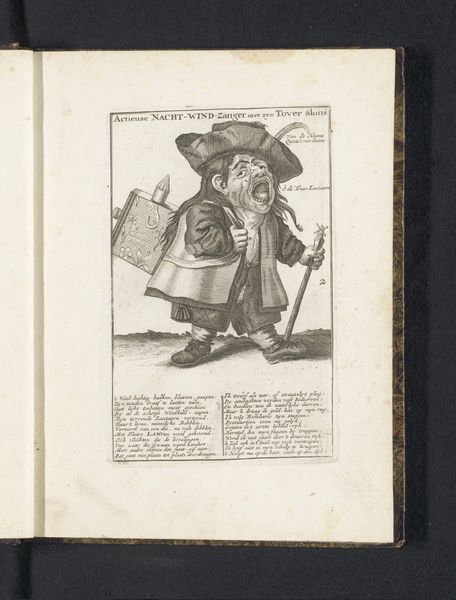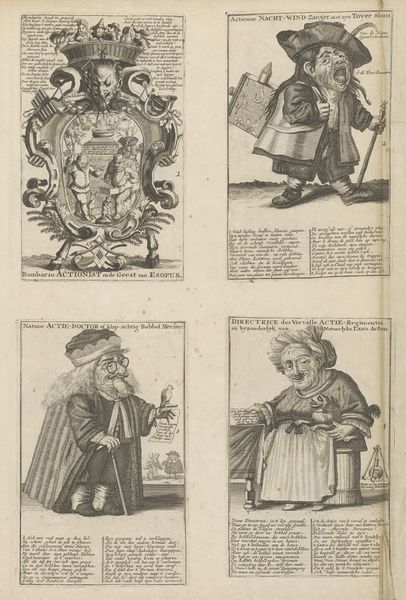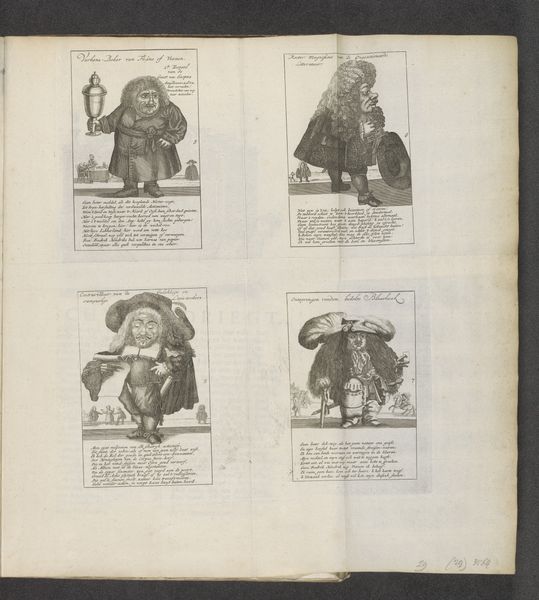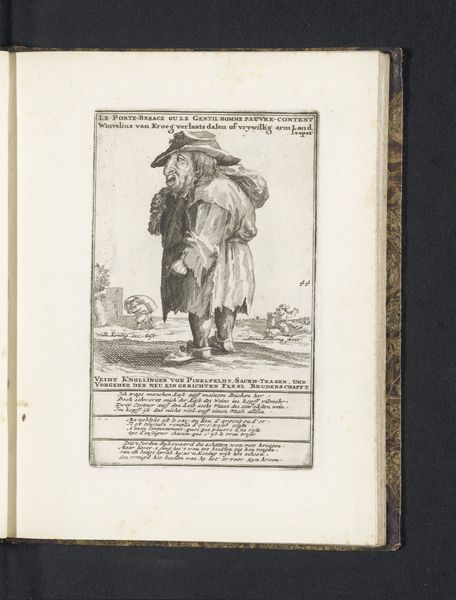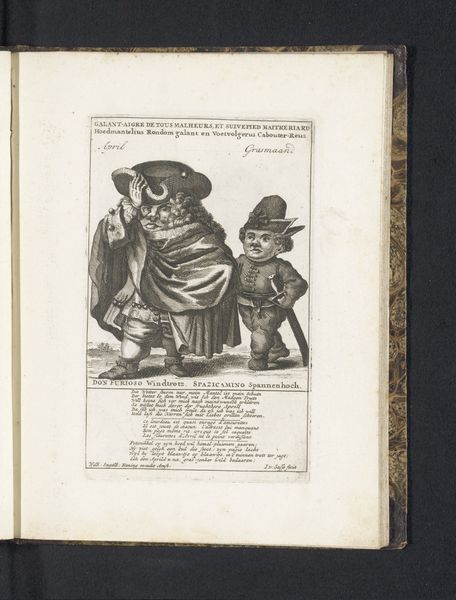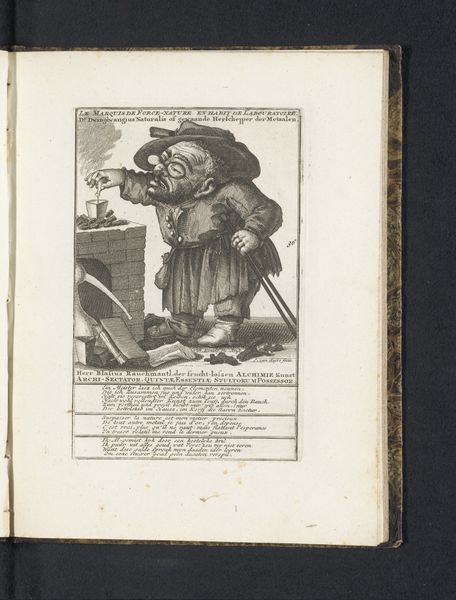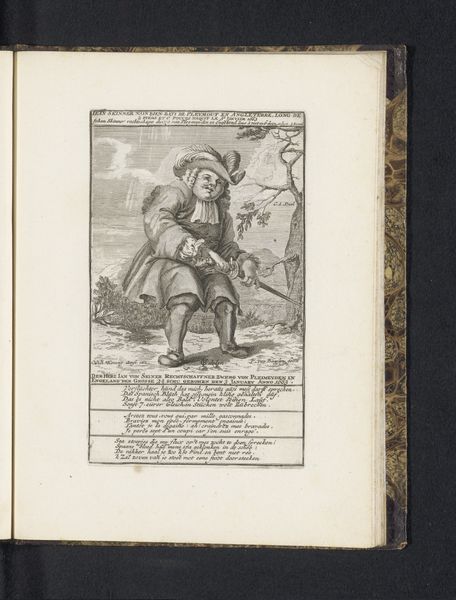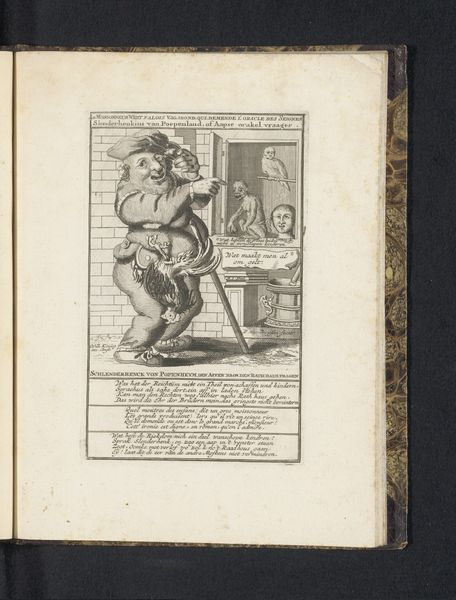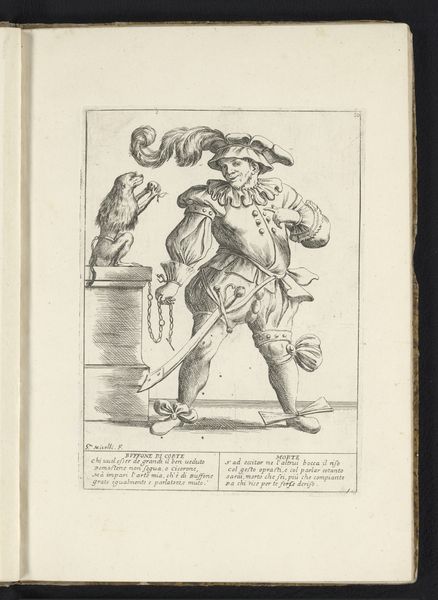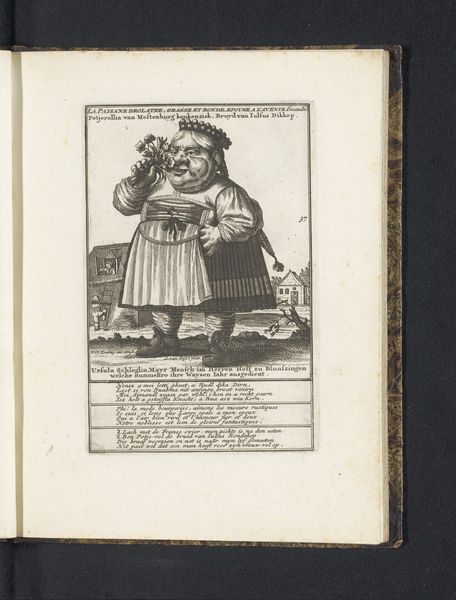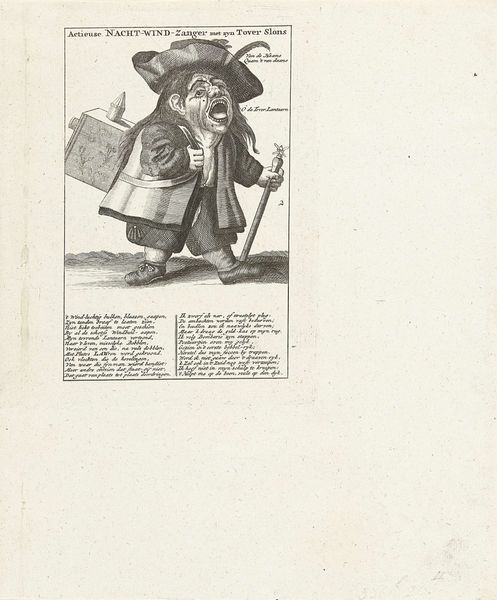
print, engraving
#
baroque
# print
#
caricature
#
engraving
Dimensions: height 160 mm, width 100 mm, height 435 mm, width 280 mm
Copyright: Rijks Museum: Open Domain
Curator: Here we have a fascinating print from 1720 attributed to Joost van Sassen, titled "Blad met karikaturen van dwergen en de windhandel," or "Sheet with caricatures of dwarves and the wind trade." Editor: My immediate impression is one of delightful absurdity. The figures are so exaggerated, almost grotesque, yet the delicate engraving lends a strange sort of refined air to the whole composition. Curator: Precisely. Van Sassen's deliberate use of engraving, with its precise lines and sharp contrasts, highlights the grotesque features in each caricature. It accentuates, visually, the underlying critique of societal figures engaged in what was known as "windhandel," or speculative trading. Editor: I find the symbolism utterly captivating. Each distorted figure, their oversized hats, the chalices, the scrolls—they each signify a certain type, or perhaps, a certain folly? It evokes the universal trope of the little man aspiring for, or inflated by, false success. Curator: Symbolism indeed plays a significant role. If we isolate the single character holding a chalice, for example, note the careful delineation of the garment, almost too large for his dwarfed stature. The use of line emphasizes its folds and its disproportion. This points not only to a character flaw, but also reflects, in purely visual terms, imbalance and disharmony. Editor: And look at the throngs of tiny people in the background. They emphasize the scale of the individual—isolated, almost floating—and perhaps represent the public whose perception, or finances, can be so easily manipulated. Curator: It's an intricate social commentary, using form and figure to critique, quite bluntly, moral failings within 18th-century Dutch society. Editor: Studying these images offers an interesting dive into the anxieties of the era—perhaps those anxieties still exist. We are also seeing it visually depicted here with exaggerated proportions. Curator: Indeed, from a purely compositional point of view, it’s a brilliant example of baroque satire, blending artistry and societal commentary with ruthless effectiveness. Editor: What lingers for me is how well this caricature manages to walk the tightrope between the particular, that specific era and trade, and the universal frailties of human nature, avarice, and delusion. It leaves you wondering how much has really changed in three hundred years.
Comments
No comments
Be the first to comment and join the conversation on the ultimate creative platform.
